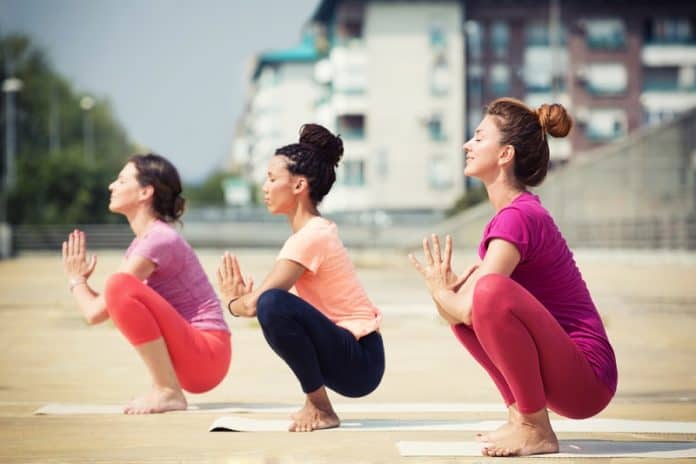Yoga squats Malasana for those who have been practicing yoga for months (or just can boast of a good stretch), you can gradually move on to more complex asanas. Their choice is quite large and diverse – about a thousand. To begin to complicate the training should, perhaps, with Malasana. This post looks difficult, and, in fact, it is. It is not difficult to learn how to do it, but only if you have good flexibility and movable joints.
One of the most well-liked and adaptable exercises for training is the yoga squat. They can be carried out not only in the classroom but also at home, when traveling, and, in theory, anywhere that is convenient.
Yoga squats can be performed with just the body’s weight; if you want to add more weight, however, you can use improvised tools such as heavy books or water bottles. There are various variations of squats, and many of them work practically every lower-body muscle as well as the abs in addition to the gluteal muscles. In this article, we discuss the most common varieties of squats.
Why do different types of yoga squats
Types of yoga squats
Standard squats
This is the most common sort of squat and a fundamental exercise. If you can master it, handling all the others will be simpler for you.
Put your feet shoulder-width apart so that they are parallel to one another when you stand up straight. Without extending your knees by the toe, begin to squat. The body should shift its weight to the heels. Drop to where your hips are parallel to the floor. Use the gluteal muscles, squeezing them while raising, to climb up.
Sumo in yoga squat
Compared to regular squats, this exercise slightly more thoroughly tones the inner surface of the thighs and glutes. And it’s all because of how the legs are positioned.
The socks should look to the sides and be positioned so that they are wider than the shoulders. The pelvis should be moved back and the body should be slightly tilted forward. Toes parallel to the floor, squat. Do not bend your knees all the way when ascending. Otherwise, you risk causing joint damage.
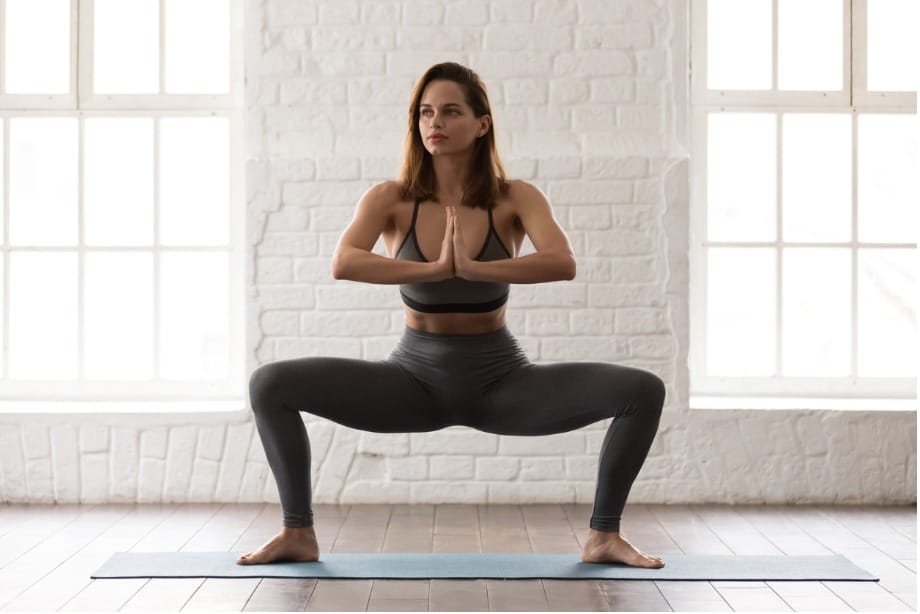
Plie in yoga squat
While comparable to the prior variation, this one nonetheless differs in a few ways. The socks should be spread out further to the sides, and the legs should be spread out even broader. The name “squat” comes from the fact that the position will resemble a well-known ballet move.
Maintain a straight back, contract your abs, and drop your pelvis until your hips are parallel to the floor. Stay in this position for a few seconds, then get up. Work on extending and strengthening the abdominal muscles in addition to everything else.
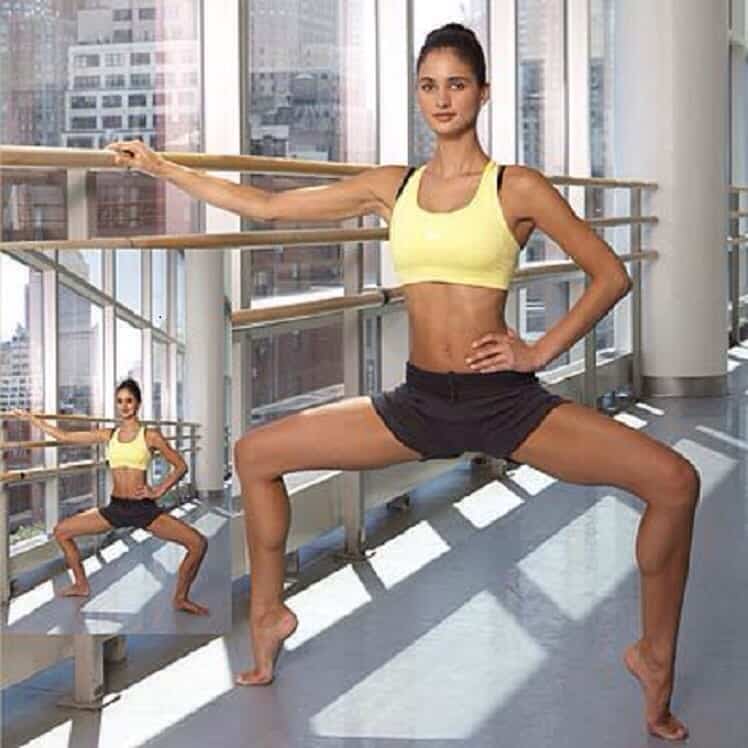
With jumps
Incorporating a cardio workout like jumping out to a conventional squat will help you work out your lower body muscles more effectively, increase your dexterity and coordination, and burn more calories.
Take a typical squat position, compress your buttocks, push with your heels, then shift your weight to your feet and jump up from your socks.
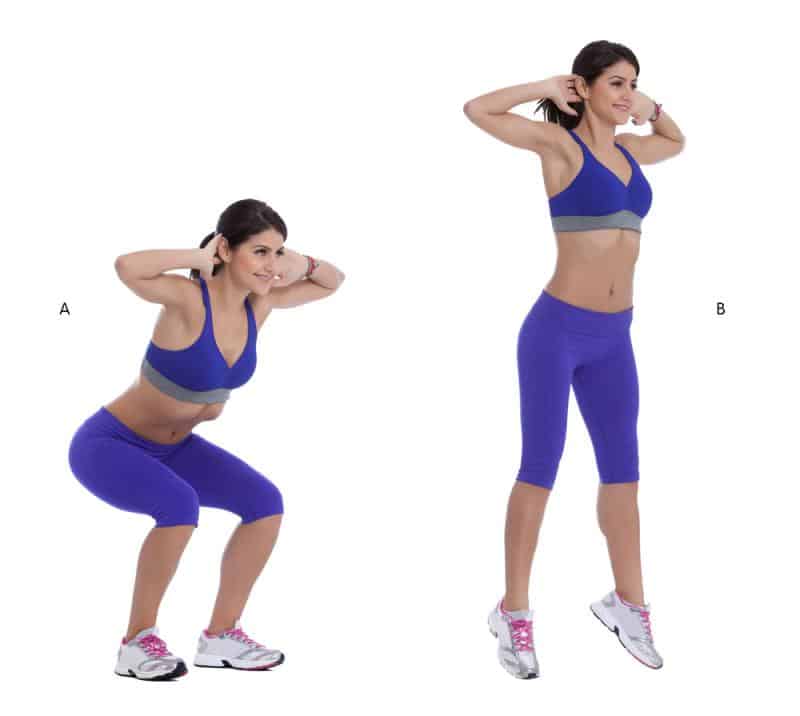
“Curtsy” squats
The inner thigh muscles, which are always considerably harder to pump, are aggressively used in this exercise.
Spread your socks out to the sides and place your feet just wider than your shoulders. As you squat, shift your weight to one leg and oblique lunge backward with the other. Keep a close eye on the supporting leg’s knee and avoid removing it by the toe. Alternate between each squat using a different leg.
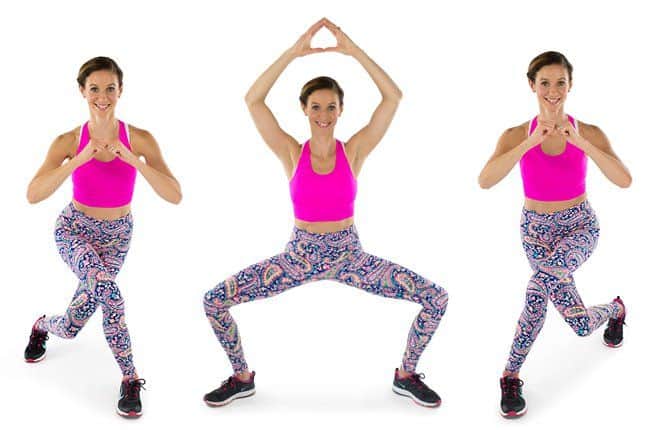
With a rise on the toes
This exercise tones the quadriceps, buttocks, and biceps of the thigh while strengthening the hip, knee, and ankle joints.
As in the sumo position, space your feet at least wider than shoulder-width apart. Place your weight on your heels as you gradually lower yourself. Lift your heels off the ground and stand up straight by squeezing your buttocks and starting to rise.
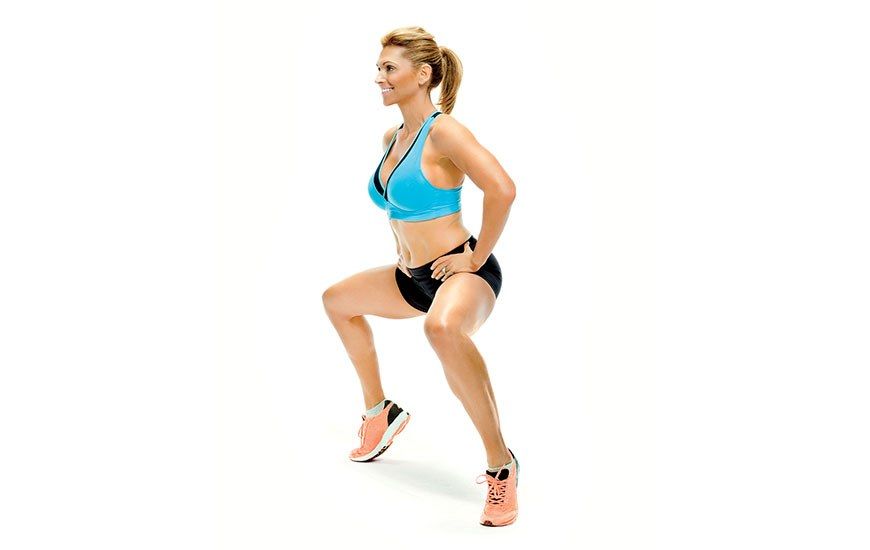
With the lifting of the legs to the sides
These squats target the quadriceps, hip biceps, gluteus maximus, and core muscles.
Swing your legs to the side alternatively while performing regular squats, adding weight at the same time. When pulling away, strive to keep the leg slightly raised; only then should it be lowered and squatted.
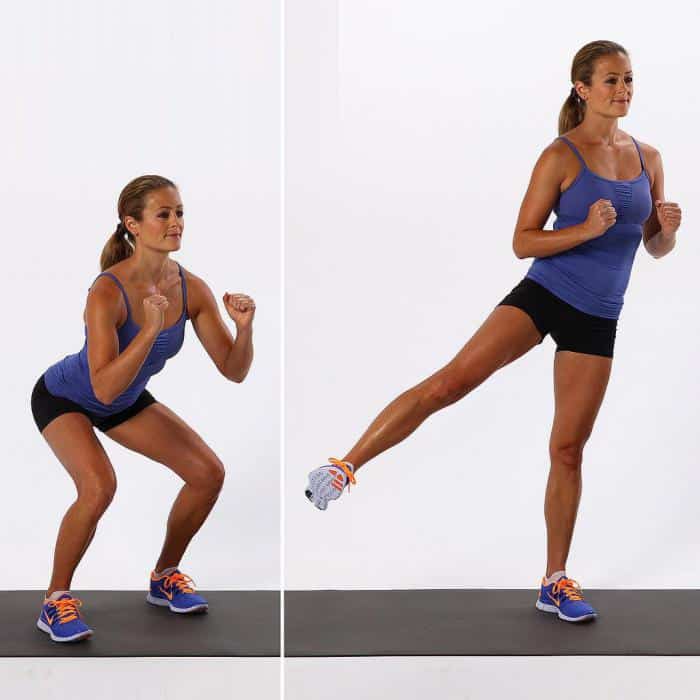
Gun squats
Let’s just say that this particular variation of the squat is one of the hardest, and newbies won’t likely be able to get it down quickly. However, this exercise is also quite efficient and helps to improve coordination while also working the leg muscles and stabilizers.
You can carry it out in a simplified manner while sitting on a chair. Supporting yourself on one leg, stand up straight. Take the other off the ground. Maintain your equilibrium while you sit down on a chair. Keep your foot on the weight as you ascend.
In a more difficult variation, you should bend one leg and straighten the other while getting to the floor.
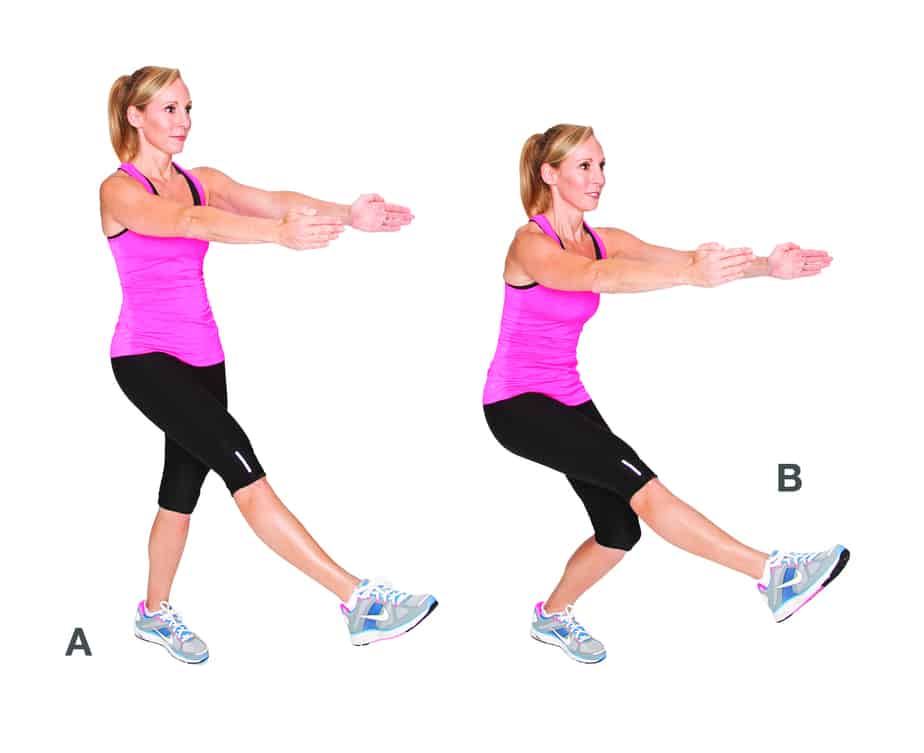
Squats spring
These squats are comparable to regular ones, but because of the “spring” movement, the quadriceps and buttocks “burn” considerably more quickly. In order to “finish off” the muscles, it is recommended to include this exercise at the end of the workout.
As with a conventional squat, lower yourself. Linger and begin leaping up and down while retaining a small amplitude at the lower position. You should perform as many “springs” as you can before returning to the starting position.
Malasana
Today, we’ll tell you about Astana, a supplement that can instantly ease back pain, stress, and anxiety. exercise for the back One of the yoga asanas that has a complex impact on the body is malasana, often known as the garland pose. Stress reduction, strength building, and self-refreshing are all benefits. Regular asana practice can also help you lose weight, extend your spine, tighten your abs, and get rid of back problems.
This pose is advised to perform in trying times because, like other asanas, it provides a sense of harmony, assurance, and relaxation. A person stops worrying about unimportant things when they are in halasana, and they become calmer and more composed.
Malasana additionally assists with brightening up and invigorating the mind. This asana is useful for ladies since it assists with killing feminine issues and building up a cycle. Malasana impeccably adapts to all age-related body changes: overabundance of weight and fat stores in the lower midsection.
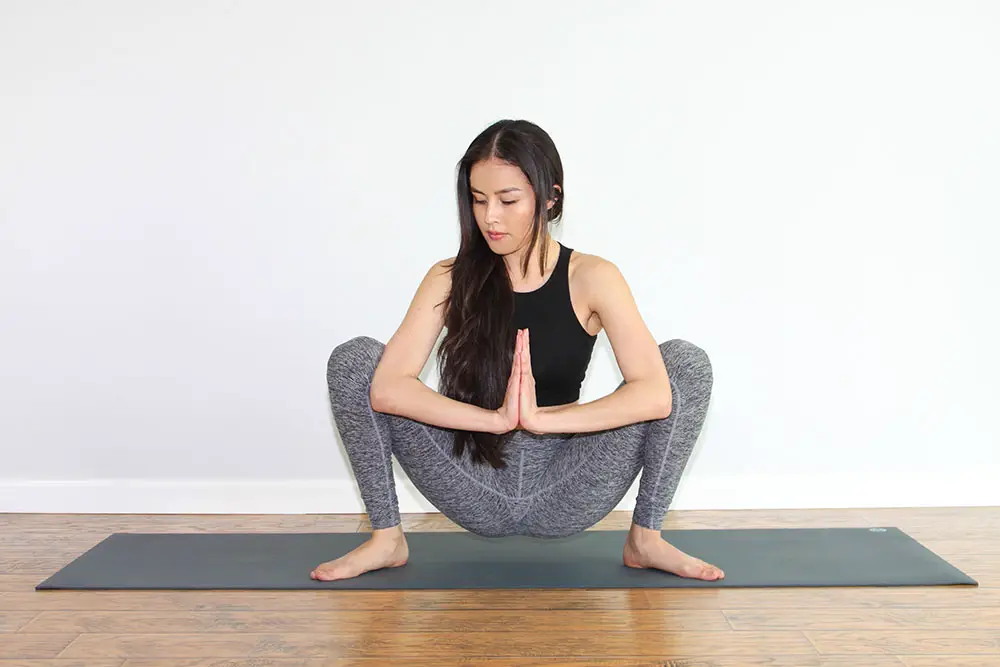
More about Astana
“Mala” means “garland”, hence “Malasana” is “garland pose”.
It should be noted that it can be performed in two variations. The first one is extremely simple, almost every beginner yogi can cope with it. By the way, it is more often called the “frog pose”.
But the second one is already more complicated. We will consider both variants of this rather popular asana.
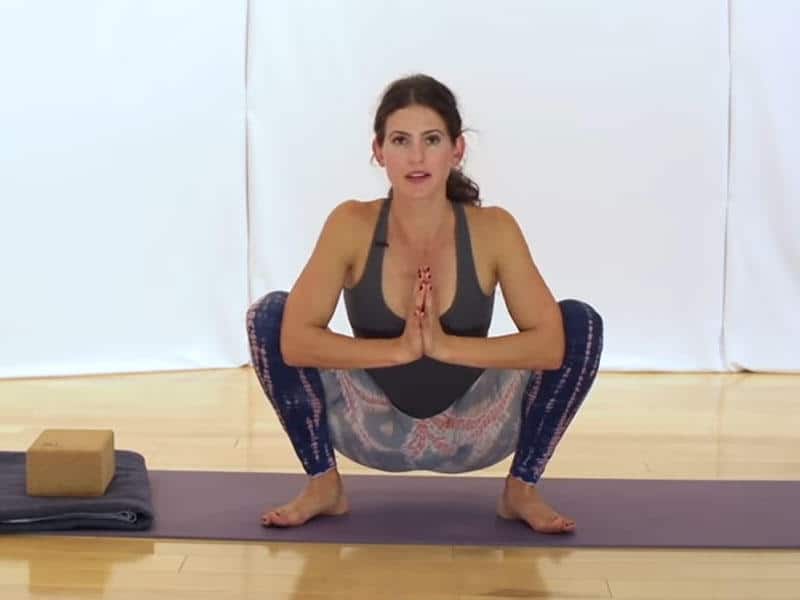
Who is Malasana useful for, and who is not very
Both the first and second varieties give around a similar impact. Normally, a more complicated technique for execution has an extraordinary advantage, which comprises fostering the adaptability of the spinal section.
Performing Malasana allows you to prevent or get rid of the following problems:
- back pain (primarily in the lower back);
- arthritis;
- menstrual cycle disorders;
- pain during menstruation
It likewise works on the working of pelvic organs, and fortifies and conditions the muscles of the back, abs, rear end, and thighs.
Keeping away from performing is emphatically suggested for pregnant ladies (at late stages) just as the people who dislike knee joints or the spine.
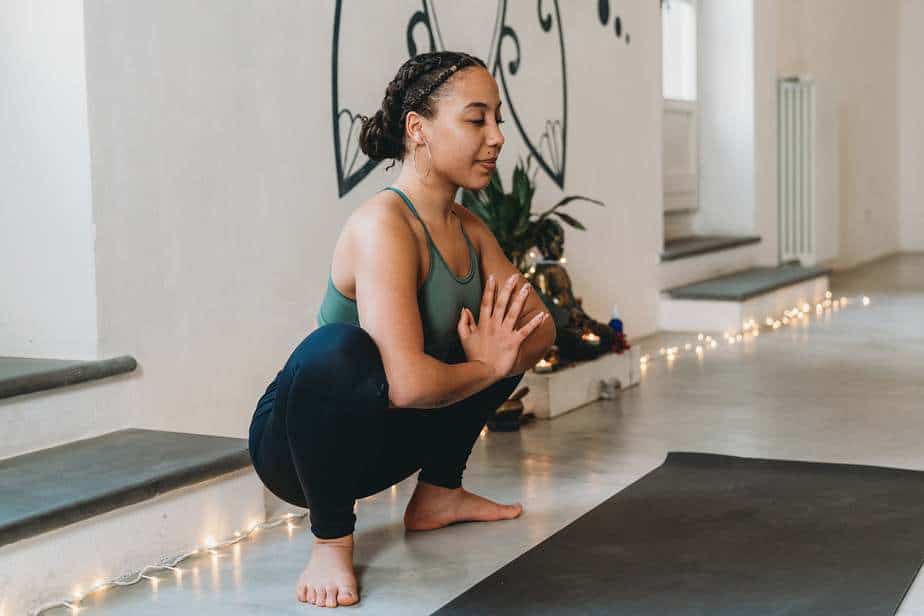
Technique of execution
Let’s consider exactly how Malasana is performed:
- Getting straight.
- The legs are placed about one and a half times wider than the width of the shoulders. Feet – turn outwards.
- We squat deeply, lowering the buttocks as low as possible. In this case, the foot should be completely on the floor.
- Palms are joined in front of the chest.
- We bring our elbows forward and press them against our knees.
- We try to put pressure on our knees with our elbows, and “resist” this pressure with our knees.
This is where the “simple” Malasana ends. Those who want to try the harder option – continue:
- The body is tilted forward. At the same time, the feet remain on the floor.
- With our hands, we “grab” the legs in such a way that the armpits are below the kneecaps.
- We lower the head – it should be approximately at the same level as the toes.
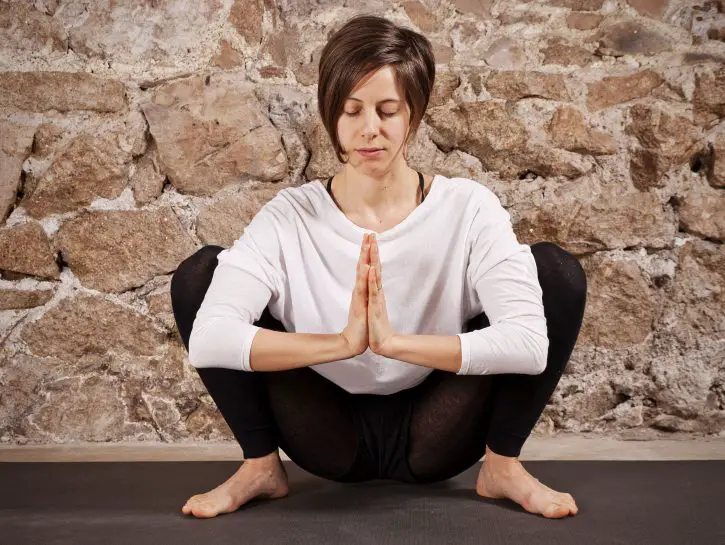
Important nuances of Malasan
The feet ought to stay on a superficial level during the exhibition of the asana. Assuming the heels actually fall off the floor, put something under them (for instance, a rolled-up yoga mat) with the goal that they have stable help.
- The body should be tilted forward until it is parallel to the floor.
- Breathing toward the endpoint ought to be profound and even. In case you can’t breathe in profoundly, then, at that point, you should change the situation of the body so that the lungs can work completely.
















